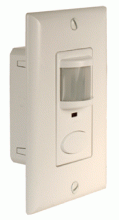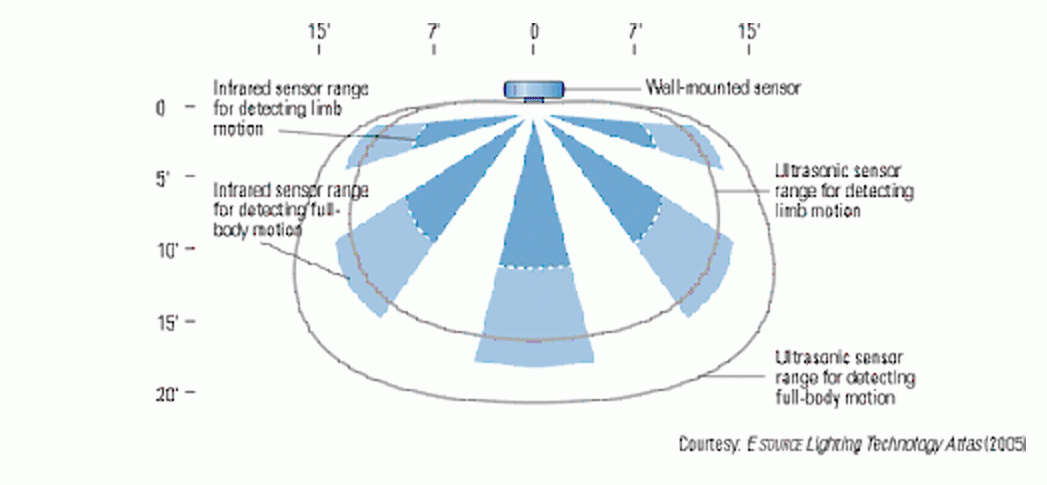How a Lighting Occupancy Sensor Works:

Each unit has passive infra-red (PIR) sensor that detects even slight motion. A Fresnel lens gives the sensor a panoramic view.
Amherst College typically uses sensors that are "dual technology" in that they also sense noise. Triggering either the motion OR the noise sensor will keep the lights on. After the lights go off there is a two-second period where just a noise will bring them back on.
Behind the lens is a green LED that indicates when the sensor has "seen" or "heard" something.
We need to get three things right for a sensor to work properly: location, type, and setup.
- Location: the sensor must be located where it can best "see" the occupants of the room. In cases where a wall switch would be obstructed, they can be mounted on the ceiling or high on the wall.

- Type: the dual-technology sensors we use trigger on motion and sound for extra sensitivity. Ultrasonic types are also available, that can "see" reflections around corners.
- Setup: there are up to 12 parameters that can be adjusted: time delay, switch action, and sensitivity.
Switch action is adjustable, usually set so that if you manually turn lights off you have to manually turn them on again. All ceiling and high-wall sensors act this way because they have a separate (original) switch. In some areas, like rest rooms and utility closets, sensors are set to automatically come on whenever motion is sensed.
If your sensor is not working properly (either shutting off the lights when you need them, or not going off at all) please call the Service Center (ext. 2254) to report the problem. We'll adjust it to get things working right.